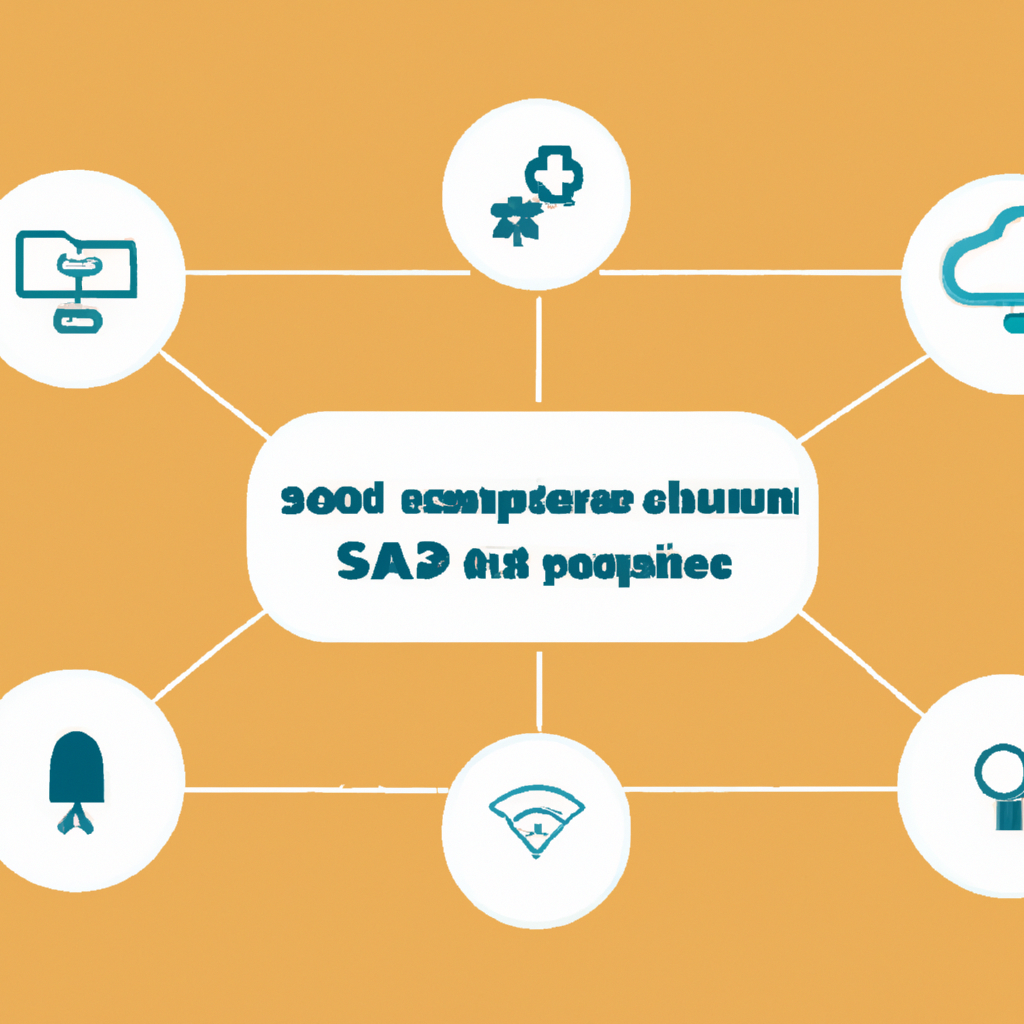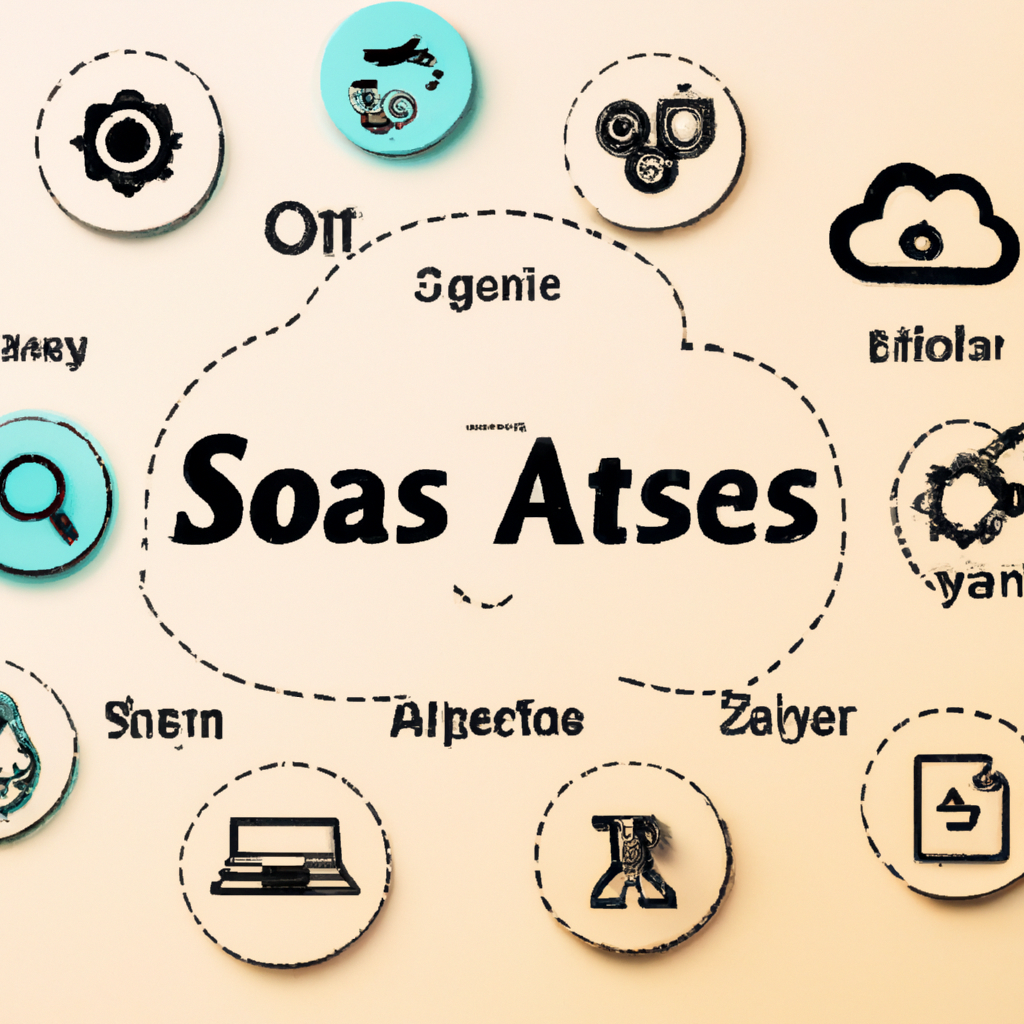So you’ve heard the term SaaS mentioned in various business discussions, but you’re still not quite sure what category it falls into. SaaS, which stands for Software as a Service, is a groundbreaking concept that has revolutionized the way businesses operate. It refers to cloud-based software applications that are hosted and managed by a third-party provider, eliminating the need for users to download or install any software. In this article, we’ll explore the business category that SaaS belongs to and unravel its significance in the modern business world.
Definition of SaaS
Software-as-a-Service, or SaaS, is a software delivery model where applications are hosted on a third-party server and accessed remotely by users over the internet. Instead of installing software on individual devices, users can access and use the software through a web browser or mobile app. This model allows businesses to subscribe to software services on a pay-as-you-go basis, eliminating the need for upfront software licensing fees or hardware investments.
Overview
SaaS has gained significant popularity in recent years due to its numerous benefits for businesses. It provides a cost-effective solution, as companies only need to pay for the services they use, rather than investing in expensive software licenses and infrastructure. Additionally, SaaS offers scalability and flexibility, enabling businesses to easily scale up or down their software usage as per their needs. This article will explore the various aspects of SaaS, including its key features, its growth in the technology industry, different business models, advantages, challenges, its relationship with cloud computing, vertical-specific applications, revenue models, and future trends.
Software-as-a-Service Model
The SaaS model works on a subscription-based system, where users pay a recurring fee to access and use the software. The software is centrally hosted by the service provider, who also handles maintenance, updates, and security. This eliminates the need for users to manage and maintain their own software infrastructure, allowing them to focus on their core business activities. Moreover, SaaS applications are typically accessed through a web browser or mobile app, making them accessible from anywhere with an internet connection.
Key Features
SaaS applications are known for their distinct features that differentiate them from traditional on-premises software. These features include multi-tenancy, automatic updates, and customization options. Multi-tenancy allows multiple users or organizations to share the same application while maintaining data privacy and security. Automatic updates ensure that users are always accessing the latest version of the software, eliminating the need for manual installations or updates. Lastly, SaaS applications often offer customization options, allowing businesses to tailor the software to their specific needs without requiring extensive development resources.
SaaS in the Technology Industry
Rapid Growth
The SaaS market has experienced rapid growth in recent years, driven by the increasing demand for cost-effective and scalable software solutions. Businesses across various industries have embraced SaaS to streamline their operations, enhance productivity, and reduce IT costs. The convenience and flexibility offered by SaaS have made it an attractive choice for both small startups and large enterprises, contributing to its exponential growth.
Market Size and Revenue
The SaaS market has witnessed substantial growth, with global revenues estimated to reach billions of dollars annually. The market is expected to continue expanding as more businesses adopt cloud-based solutions and prioritize software subscriptions over traditional software licensing. As businesses increasingly shift towards SaaS, the market’s revenue potential is projected to increase significantly.
Market Segments
The SaaS market is segmented based on industry verticals, catering to specific sectors such as healthcare, finance, manufacturing, retail, and more. This segmentation allows SaaS providers to offer industry-specific solutions tailored to the unique needs of different businesses. By focusing on specific verticals, SaaS providers can develop expertise and domain knowledge, providing a higher level of value and customization to their customers.

This image is property of pixabay.com.
SaaS Business Models
Subscription-Based Model
The subscription-based model is the most common business model in the SaaS industry. Customers pay a recurring fee on a monthly or annual basis to access and use the software. This model offers predictable and consistent revenue for SaaS providers while providing customers with flexibility and the ability to scale their software usage as their business grows. Subscriptions can be tiered, offering different features or levels of service at different price points to cater to a wide range of customer needs.
Freemium Model
The freemium model is a popular approach in which basic features of the software are offered for free, while advanced capabilities or additional features are available under a paid subscription. This approach allows businesses to attract a large user base by offering a free version of their software, and then monetize it by upselling premium features or functionalities. Freemium models can be effective in driving customer acquisition and reducing barriers to entry for potential users.
Usage-Based Model
The usage-based model charges customers based on their actual usage of the software. This model is particularly suitable for applications that involve variable usage patterns, such as data storage or communication services. By charging customers based on their usage, businesses can align costs with value, making it a cost-effective option for customers who require sporadic or fluctuating usage levels.
Key Players in the SaaS Market
Leading SaaS Companies
The SaaS market is highly competitive, with numerous companies offering a wide array of software solutions. Some of the leading SaaS companies include Salesforce, Microsoft, Adobe, Oracle, and Shopify, among others. These companies provide a range of software applications, catering to various business needs from customer relationship management (CRM) to collaboration, marketing automation, and e-commerce.
Market Share
The market share in the SaaS industry is divided among several key players, with the distribution varying depending on the specific market segment. While some companies dominate certain niches, others compete in broader categories. Market share can fluctuate as new entrants emerge, and existing players innovate and diversify their offerings.
Competitive Landscape
The SaaS market is characterized by intense competition, with new entrants constantly challenging established players. Competitive advantages in the SaaS industry often lie in product functionality, user experience, pricing, customer support, and integration capabilities. SaaS companies strive to differentiate themselves by offering unique features and continuous innovation to attract and retain customers.

This image is property of pixabay.com.
Advantages of SaaS for Businesses
Cost Savings
SaaS offers significant cost savings compared to traditional on-premises software. Businesses no longer need to invest in expensive hardware infrastructure or dedicate IT resources to manage and maintain software systems. With SaaS, upfront costs are minimized as users pay for software access on a subscription basis, making it a more affordable option for businesses of all sizes.
Scalability
SaaS allows businesses to easily scale their software usage up or down to align with their changing needs. As businesses grow, they can add more users or access additional features and functionalities, all without the need for substantial investments in infrastructure or licenses. Similarly, during periods of reduced demand or downsizing, businesses can easily adjust their software usage, optimizing their costs accordingly.
Ease of Implementation
Implementing and deploying traditional software can be a time-consuming and complex process. SaaS eliminates the need for on-site installations, reducing implementation time and complexity. With SaaS, businesses can access the software instantly through an internet connection, making it easier and quicker to adopt and get started. This streamlined implementation process allows businesses to focus on utilizing the software to drive value for their operations.
Challenges and Considerations for SaaS Businesses
Data Security
Data security is a critical concern for both SaaS providers and their customers. As data is stored and accessed remotely, ensuring the confidentiality, integrity, and availability of data becomes vital. SaaS providers need robust security measures, such as encryption, user authentication, and regular backups, to safeguard customer data. Businesses considering SaaS solutions should thoroughly evaluate the security practices and certifications of potential providers to mitigate any potential risks.
Integration Complexity
Integrating SaaS applications with existing systems or other software can be challenging due to differences in data formats, APIs, and protocols. It is essential for businesses to ensure that the SaaS solution they choose can seamlessly integrate with their existing technology stack, allowing for efficient data transfer and interoperability. Careful planning and consulting with IT experts can help mitigate integration complexities and ensure smooth operations.
Customer Retention
In the highly competitive SaaS market, retaining customers is crucial for long-term success. SaaS businesses need to prioritize customer satisfaction by providing excellent support, regular updates, and continuous value-add features. Understanding customer needs, gathering feedback, and making iterative improvements are essential to maintaining strong customer relationships and reducing churn rates.

This image is property of pixabay.com.
SaaS and Cloud Computing
Relationship between SaaS and Cloud Computing
SaaS and cloud computing are closely intertwined, with SaaS being one of the major delivery models of cloud computing. Cloud computing refers to the broader concept of delivering computing resources, including software, storage, and processing power, over the internet. SaaS specifically focuses on providing software applications as a service through the cloud. SaaS applications leverage the underlying infrastructure and services provided by cloud computing, allowing businesses to access and utilize software without the need for on-premises installations.
Benefits of Cloud Computing for SaaS
Cloud computing offers several benefits for SaaS providers and users. It provides scalable and elastic infrastructure, allowing SaaS applications to handle varying levels of demand and accommodate growth without resource constraints. The cloud also offers high availability and reliability, ensuring that SaaS applications are accessible to users at all times. Additionally, cloud computing enables seamless collaboration and integration among different software applications, enhancing productivity and efficiency for businesses.
Infrastructure as a Service (IaaS)
Infrastructure as a Service (IaaS) is another cloud computing model that complements SaaS. With IaaS, businesses can rent computing resources, such as virtual machines, storage, and networking, from a cloud provider. SaaS providers may utilize IaaS to host their software applications, leveraging the provider’s infrastructure rather than building and managing their own data centers. This allows SaaS providers to focus on software development and customer experience while relying on the scalable and reliable infrastructure provided by the IaaS provider.
Platform as a Service (PaaS)
Platform as a Service (PaaS) is another cloud computing model that supports the development, testing, and deployment of software applications. PaaS offers a complete development and deployment environment, including tools, frameworks, and runtime environments. SaaS providers can leverage PaaS to develop and deploy their applications more efficiently, as it eliminates the need for managing underlying infrastructure and provides ready-to-use development platforms. PaaS enables faster time-to-market, agility, and reduced development costs for SaaS providers.
SaaS and Vertical Specific Applications
Customization for Specific Industries
One of the advantages of SaaS is the ability to cater to specific industries and provide customized solutions. By understanding the unique requirements and workflows of different industries, SaaS providers can develop vertical-specific applications. These applications are tailored to address industry-specific challenges, compliance regulations, and workflow processes, offering businesses a higher level of value and efficiency compared to generic software solutions.
Vertical SaaS Market Growth
The adoption of vertical-specific SaaS applications has seen significant growth in recent years. As businesses increasingly recognize the benefits of industry-specific solutions, the demand for vertical SaaS applications has risen. Vertical SaaS providers focus on niche markets, offering specialized software that aligns with the specific needs of businesses in those industries. The vertical SaaS market is expected to continue its growth trajectory, as more industries realize the value of tailored software solutions.
Industry-Specific Challenges
Different industries face unique challenges and requirements that can be addressed by vertical SaaS applications. For example, healthcare organizations require robust HIPAA compliance features, while manufacturing companies may need software that integrates with their shop floor equipment. Developing and maintaining industry-specific knowledge, regulatory compliance, and tailored features becomes crucial for vertical SaaS providers. It is essential for businesses to assess the compatibility of SaaS solutions with their industry-specific needs to ensure optimal functionality and value.

SaaS Revenue Models
Monthly Recurring Revenue (MRR)
Monthly Recurring Revenue (MRR) is a common metric used by SaaS businesses to track and predict their revenue streams. MRR represents the predictable revenue generated by the subscription fees paid by customers on a monthly basis. By focusing on MRR, SaaS providers can monitor the health and growth of their subscriber base and make informed decisions regarding marketing, sales, and customer retention strategies.
Annual Recurring Revenue (ARR)
Annual Recurring Revenue (ARR) is another crucial metric for SaaS businesses, representing the total value of recurring revenue expected over a year. ARR provides a larger picture of the company’s revenue potential and helps in assessing long-term growth and profitability. By tracking ARR, SaaS providers can forecast revenue, analyze customer retention rates, and measure the success of their sales and marketing efforts.
Total Contract Value (TCV)
Total Contract Value (TCV) is the total value of a customer contract over its entire duration. TCV includes all the fees associated with the contract, including initial setup costs, recurring subscription fees, and additional services. Tracking TCV helps SaaS providers understand the overall value of their customer contracts and aids in revenue forecasting and resource allocation.
Future Trends in the SaaS Industry
Artificial Intelligence (AI) and Machine Learning
Artificial Intelligence (AI) and Machine Learning (ML) are playing an increasingly significant role in the SaaS industry. SaaS providers are leveraging AI and ML technologies to automate processes, enhance data analysis capabilities, and improve user experiences. AI-powered chatbots, predictive analytics, and intelligent automation are just a few examples of how AI and ML are transforming SaaS applications and driving innovation in the industry.
Internet of Things (IoT)
The Internet of Things (IoT) is another trend that is set to impact the SaaS industry. IoT involves the interconnection of physical devices, sensors, and software, enabling data collection and exchange. SaaS applications can leverage IoT data to provide real-time insights, automate processes, and optimize decision-making. With the growing adoption of IoT devices across industries, the integration of IoT and SaaS will continue to create new opportunities and drive efficiency and innovation.
Edge Computing
Edge computing is emerging as a trend that complements cloud computing in the SaaS industry. Edge computing brings computing capabilities closer to the data source, reducing latency and enhancing real-time processing capabilities. SaaS providers can leverage edge computing to enhance the performance and responsiveness of their applications, particularly for use cases that require low latency or offline functionality. Edge computing offers opportunities for SaaS providers to optimize data processing, deliver faster responses, and expand their offerings to new markets and industries.
In conclusion, SaaS has revolutionized the software industry, offering businesses a cost-effective and scalable solution for accessing and utilizing software applications. Its subscription-based model, along with its key features such as multi-tenancy and automatic updates, has made it a popular choice for businesses of all sizes. SaaS has seen rapid growth across various industries, with market segmentation based on specific verticals driving customized solutions. Different business models, including subscription-based, freemium, and usage-based, cater to diverse customer needs. While SaaS offers several advantages, such as cost savings, scalability, and ease of implementation, it also presents challenges, including data security and integration complexity. SaaS relies on cloud computing, with cloud infrastructure and platforms supporting its delivery and development. The vertical-specific SaaS market has witnessed growth as industries recognize the value of tailored solutions. Revenue models such as MRR, ARR, and TCV help SaaS providers track and forecast their financial performance. Looking ahead, the integration of AI and ML, the adoption of IoT, and the rise of edge computing are promising trends shaping the future of the SaaS industry, opening doors to new possibilities and innovations.

